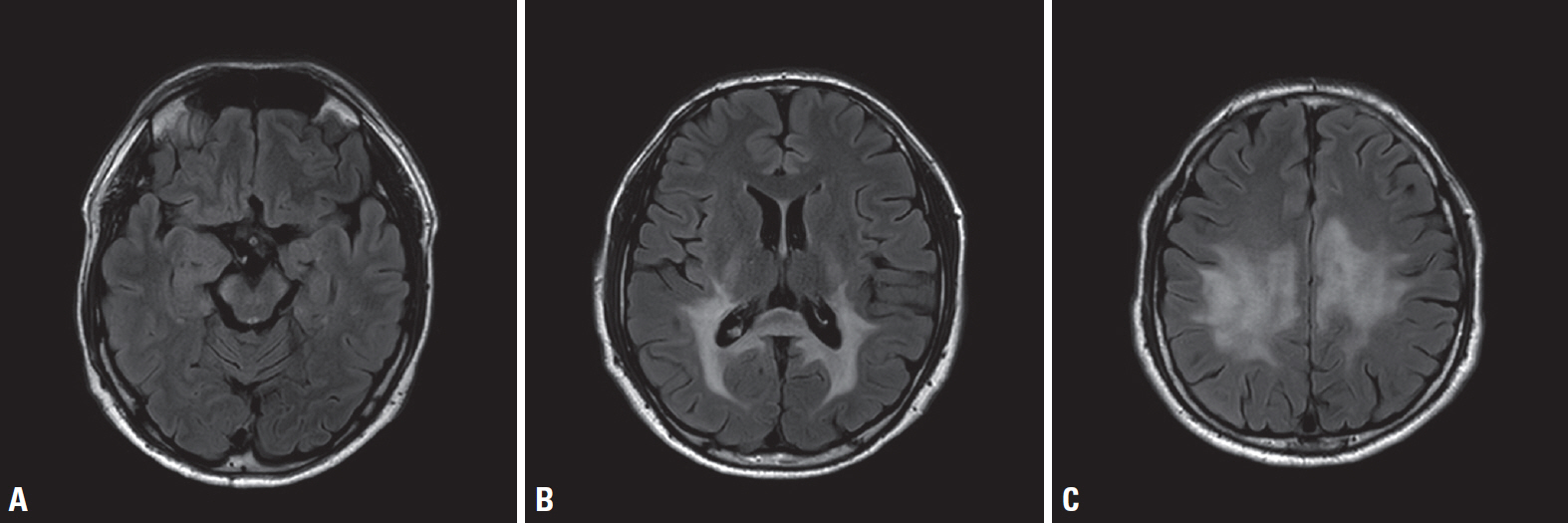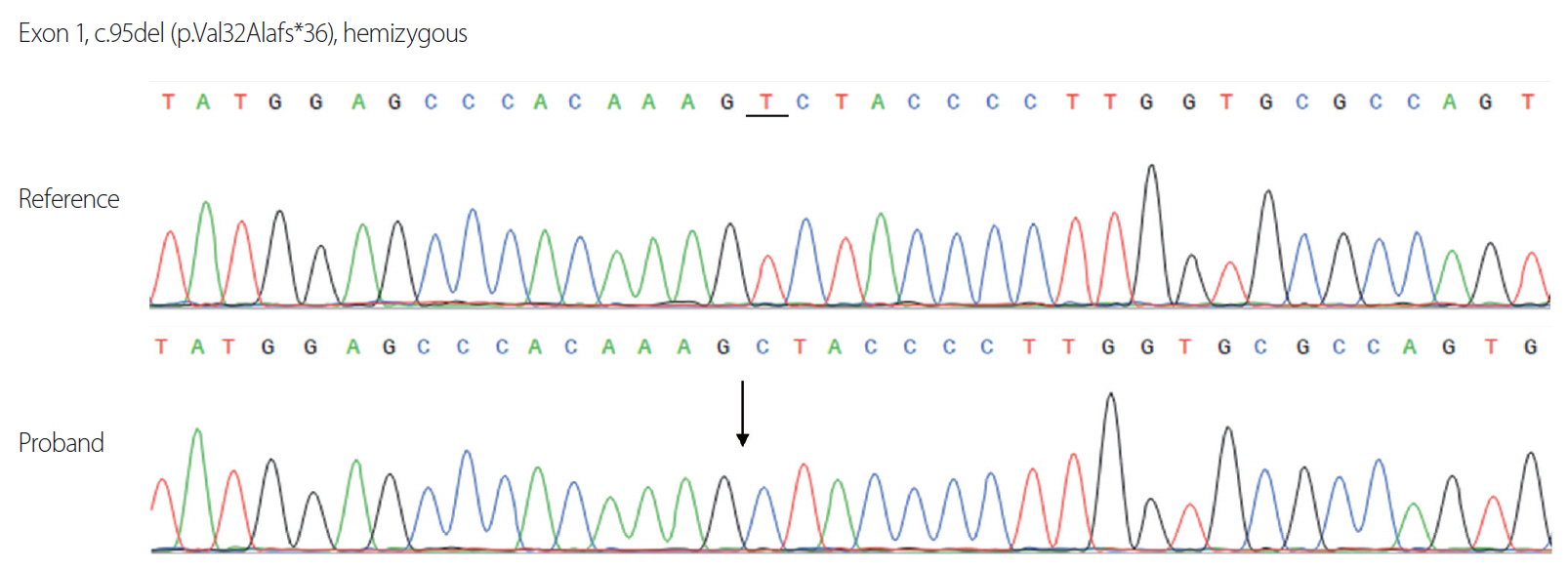Ann Clin Neurophysiol.
2021 Apr;23(1):61-64. 10.14253/acn.2021.23.1.61.
Adrenomyeloneuropathy with cerebral involvement due to a novel frameshift variant in ABCD1 gene
- Affiliations
-
- 1Department of Neurology, Asan Medical Center, University of Ulsan College of Medicine, Seoul, Korea
- 2Graduate School of Medical Science and Engineering, Korea Advanced Institute of Science and Technology, Daejeon, Korea
- KMID: 2515610
- DOI: http://doi.org/10.14253/acn.2021.23.1.61
Abstract
- Adrenoleukodystrophy (ALD) is the most common peroxisomal disorder caused by mutations in the gene, ABCD1, causing abnormal accumulation of very-long-chain fatty acids in the nervous system and adrenal glands. There are various clinical manifestations of ALD. Here we report a 47-year-old male with adrenomyeloneuropathy with cerebral involvement who exhibited progressive gait disturbance and cognitive impairment. A novel frameshift variant (c.95del [p.Val32Alafs*36]) in exon 1 of ABCD1 was identified. This report provides additional information regarding the various clinical characteristics of ALD.
Keyword
Figure
Reference
-
1. Mosser J, Douar AM, Sarde CO, Kioschis P, Feil R, Moser H, et al. Putative X-linked adrenoleukodystrophy gene shares unexpected homology with ABC transporters. Nature. 1993; 361:726–730.
Article2. Boehm CD, Cutting GR, Lachtermacher MB, Moser HW, Chong SS. Accurate DNA-based diagnostic and carrier testing for X-linked adrenoleukodystrophy. Mol Genet Metab. 1999; 66:128–136.
Article3. Pavlakis SG. New insights into adrenoleukodystrophy. Eur J Paediatr Neurol. 2017; 21:597.
Article4. Kemp S, Huffnagel IC, Linthorst GE, Wanders RJ, Engelen M. Adrenoleukodystrophy-neuroendocrine pathogenesis and redefinition of natural history. Nat Rev Endocrinol. 2016; 12:606–615.5. Berger J, Forss-Petter S, Eichler FS. Pathophysiology of X-linked adrenoleukodystrophy. Biochimie. 2014; 98:135–142.
Article6. Park HJ, Shin HY, Kang HC, Choi BO, Suh BC, Kim HJ, et al. Clinical and genetic aspects in twelve Korean patients with adrenomyeloneuropathy. Yonsei Med J. 2014; 55:676–682.
Article7. Vanderver A. Genetic leukoencephalopathies in adults. Continuum (Minneap Minn). 2016; 22:916–942.
Article8. Köhler W, Curiel J, Vanderver A. Adulthood leukodystrophies. Nat Rev Neurol. 2018; 14:94–105.
Article9. Eichler F, Duncan C, Musolino PL, Orchard PJ, De Oliveira S, Thrasher AJ, et al. Hematopoietic stem-cell gene therapy for cerebral adrenoleukodystrophy. N Engl J Med. 2017; 377:1630–1638.
Article10. Gong Y, Mu D, Prabhakar S, Moser A, Musolino P, Ren J, et al. Adenoassociated virus serotype 9-mediated gene therapy for x-linked adrenoleukodystrophy. Mol Ther. 2015; 23:824–834.
Article
- Full Text Links
- Actions
-
Cited
- CITED
-
- Close
- Share
- Similar articles
-
- Cerebral Adrenomyeloneuropathy with Trp77-Leu82del Mutation in ABCD1 Gene
- Novel ABCD1 Gene Mutation in a Korean Patient with X-Linked Adrenoleukodystrophy Presenting with Addison's Disease
- A Man with Adult-onset Progressive Spastic Paraparesis: Genetically Confirmed as Novel Mutation of ABCD1 Gene
- Clinical and Genetic Aspects in Twelve Korean Patients with Adrenomyeloneuropathy
- An Incidentally Identified Sporadic Case with Adrenoleukodystrophy with the ABCD1 Mutation




